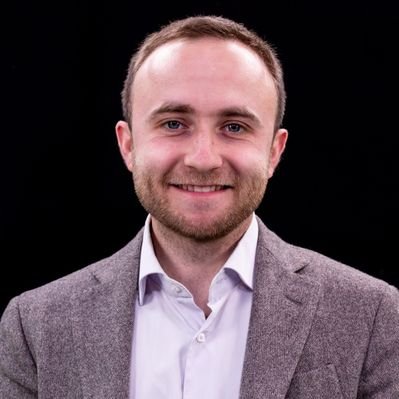Rome: Just a stone's throw away from the iconic Piazza Navona, nestled amidst the bustling streets of Rome, stands the National Church of France - San Luigi de' Francesi. Built in the 16th century, this church was designed to accommodate the sizable French community residing in the Eternal City.
Construction on this architectural gem commenced during the papacy of Pope Clement VIII at the end of the 16th century and bears the signature of the same illustrious architects who contributed to the construction of St. Peter's Basilica: Domenico Fontana and Giacomo della Porta.
Within the hallowed walls of this church lie three remarkable masterpieces by the legendary artist Michelangelo Merisi, renowned as Caravaggio.
Art historian Elizabeth Lev sheds light on Caravaggio's artistic journey and his arrival in Rome, stating, "Caravaggio came from Milan. Milan boasts a rich artistic legacy, with luminaries like Leonardo da Vinci residing there for almost two decades. It was in Milan that Caravaggio honed his skills in oil painting. Unlike Florence and Rome, where large frescoes adorned vast walls, Caravaggio learned to work on canvas, creating precise and exquisite paintings. He arrived in Rome in his twenties, eager to make his mark."
However, Caravaggio initially struggled to gain recognition, as the art scene favored more experienced painters proficient in fresco painting with substantial portfolios of drawings. His breakthrough came in 1599, when he was commissioned to work on the San Luigi Dei Francesi, the national Church of the French. For the first time, Caravaggio was tasked with creating large-scale paintings in a chapel for the jubilee year of 1600, expecting millions of viewers. It was a thrilling opportunity that marked a turning point in his career.
These three magnificent paintings by Caravaggio are housed in the Contarelli Chapel, located on the left side of the church. They narrate the story of Saint Matthew, encompassing his divine calling, the inspiration bestowed upon him for writing Holy Scripture, and ultimately, his martyrdom.
The church of San Luigi dei Francesi had a special mission in 1600. The King of France, Henry IV of Navarre, had recently converted to Catholicism from being a Huguenot. The papacy sought to use the church to communicate with pilgrims about the transformative power of conversion. Cardinal Matthew Cantarelli commissioned the chapel's decoration, focusing on the life of St. Matthew. This narrative of vocation and conversion resonates with both priests and the general populace, making it a powerful choice. The paintings depict Matthew, a wealthy tax collector, leaving his former life, writing the Gospel, and, finally, meeting martyrdom. These three pivotal moments in the life of the saint were portrayed by Caravaggio in a groundbreaking manner, revolutionizing the way ancient stories were told through art.
Caravaggio was a young artist when the Protestant Reformation was shaking the Catholic world. Popes of that era harnessed art as a tool to combat the Lutheran heresy. Elizabeth Lev explains, "As the Protestant Reformation began in 1517, it triggered a series of challenges within the Church. Confusion arose about sacraments, the role of saints, religious beliefs, and practices. By the mid-16th century, this confusion reached its peak. The Council of Trent, which concluded in 1563, sought to address these issues. It was decided to convey these resolutions to the people through the art found in churches. Artists were enlisted to help transmit these messages. Caravaggio played a significant role in this, despite his tumultuous personal life, and his art encapsulated the tension of the Post-Reformation period."
Caravaggio's task was to depict St. Matthew, a tax collector who became an apostle and wrote one of the Gospels. In Lev's words, "What makes the paintings so striking, especially 'The Calling of St. Matthew,' is Caravaggio's unique approach. Caravaggio presents us with Matthew, the affluent tax collector, surrounded by opulent fabrics, vibrant colors, and lavish attire reminiscent of 17th-century fashion. He's not concerned with historical accuracy but rather with showcasing the richness of his era. The painting portrays everything a person could desire: wealth, fine clothing, and even a sword symbolizing their status. From the right side of the altar, a barefoot man appears. This man, Jesus, reaches into the frame and beckons Matthew to follow him, capturing the thrilling moment of Matthew's divine calling."
Caravaggio's rendition of Matthew's calling employs a dramatic interplay of light and shadow, as Lev describes, "Caravaggio introduces a novel use of light, emanating from behind Jesus's head, behind the altar. This radiant light strikes Matthew's face, drawing him like a magnet. To emphasize the supernatural nature of this light, Caravaggio includes a window from which no actual light emanates. This supernatural illumination captures the transformative power of conversion. Interestingly, there is a modern theory suggesting that the two figures at the far end of the painting, engrossed in counting coins, could represent Matthew. The figure with his head bowed may symbolize Matthew, and Jesus waits patiently for his conversion, a beautiful message that echoes the Church's eternal readiness for conversion."
The other two Caravaggio paintings housed in the Contarelli Chapel depict different episodes in the life of the evangelist. They portray the moment when Matthew received divine inspiration to write the Gospel and his martyrdom, imagined by the artist as a saint among pagans, martyred while celebrating the Mass.
In the martyrdom scene, Caravaggio masterfully employs color and composition. He employs red and orange to create an effect reminiscent of flames, symbolizing the inspiration of writing the Gospel. This fiery depiction mirrors the transformative experience of receiving divine inspiration.
The final painting shows Matthew on the brink of martyrdom, a challenging task for Caravaggio due to its dynamic nature. In the scene, the executioner has already struck Matthew once, and he is poised to strike again. Caravaggio skillfully simplifies the composition, emphasizing the two figures on the left and right, forming a triangle with the executioner at the top.
Beyond Caravaggio's remarkable artistry, his tumultuous personal life paints a complex portrait of the artist. Elizabeth Lev reflects on this aspect, stating, "Caravaggio's life is often romanticized as that of a swashbuckling maverick who lived life on the edge. His extensive police record, totaling about 40 offenses, mostly for aggression, reveals a man who killed in a duel and associated with Rome's seedy underbelly. However, we must remember that Caravaggio, like all of us, grappled with personal troubles and challenges in living a perfect Christian life. Despite his personal struggles, his art played a crucial role in conveying the Church's message during the early 1600s in Rome."
In 1610, Michelangelo Merisi, known as Caravaggio, passed away alone in Porto Ercole, Tuscany, approximately 100 miles north of Rome. His works, characterized by the innovative use of light and shadow, introduced a new artistic method known as Caravaggism, which continues to influence and inspire artists to this day.

Alexey Gotovskiy serves as a journalist, producer, and manager at the EWTN Vatican Bureau. Born in the former Soviet Union, he holds a graduate degree in Church Communications from the Pontifical University of the Holy Cross and has produced over 200 episodes of EWTN "Vaticano," covering the life of the Universal Church.








